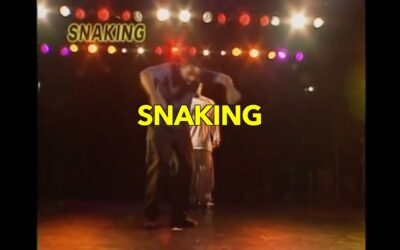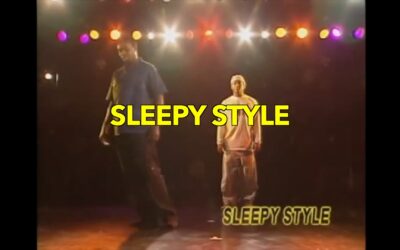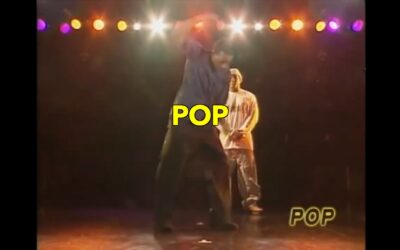Introduction
Waving is a mesmerizing dance move that has captivated audiences for decades. This iconic element of funk style dancing creates an illusion of a wave passing through the dancer’s body, resulting in a fluid and hypnotic visual effect. Originating from the streets of California, waving has become a cornerstone of various urban dance styles, particularly in popping and animation. The beauty of waving lies in its versatility; it can be performed with arms, hands, legs, or even the entire body, allowing dancers to express their creativity and showcase their control over isolated muscle movements. As a fundamental technique in funk styles, mastering the wave can elevate a dancer’s performance, adding a smooth and dynamic quality to their repertoire.
Video Demonstration
Dance History
Waving emerged in the 1970s as part of the broader funk styles dance movement in California. While it’s challenging to attribute its creation to a single individual, the move gained significant popularity through pioneering dancers in Fresno and Los Angeles. Boogaloo Sam, founder of the Electric Boogaloos, is often credited with popularizing and refining the technique. The move evolved alongside other funk style elements like popping and locking, becoming an integral part of street dance culture. By the 1980s, waving had spread beyond the West Coast, influencing dancers worldwide and becoming a staple in music videos, movies, and dance competitions.
Step By Step Instruction
1. Start with your arm extended to one side, palm facing down.
2. Begin by lifting your shoulder slightly.
3. Roll your shoulder forward, initiating the wave.
4. As the wave moves down your arm, contract your bicep.
5. Continue the wave through your elbow, keeping it slightly bent.
6. Roll through your forearm, maintaining the fluid motion.
7. Finish the wave by flexing your wrist and fingers.
8. Practice the reverse motion to complete the wave.
9. Once comfortable, try connecting multiple waves in succession.
10. Gradually increase speed and incorporate both arms for more complex patterns.
Tips For Learning
– Start slowly, focusing on the isolation of each body part involved in the wave.
– Practice in front of a mirror to visualize the wave effect and improve your technique.
– Use music with a steady beat to help you maintain rhythm and flow.
– Break down the move into smaller segments and perfect each before combining them.
– Experiment with different speeds and directions to add variety to your waves.
– Incorporate waving into your freestyle practice to make it feel more natural.
– Watch videos of experienced dancers to study their technique and style.
– Be patient and consistent in your practice; mastering the wave takes time.
Conclusion
Waving is more than just a dance move; it’s a fundamental technique that embodies the essence of funk style dancing. By mastering this fluid and expressive movement, dancers can add a captivating dimension to their performances. Whether you’re a beginner or an experienced dancer, dedicating time to perfecting your wave will undoubtedly enhance your overall dance skills and stage presence. Remember, the key to a great wave lies in smooth transitions, body control, and consistent practice.
More Funk Style Dance Moves
Mastering the Art of Tutting: A Geometric Dance Revolution
IntroductionTutting, a mesmerizing dance style that transforms the human body into a living, breathing geometric puzzle, has captivated audiences worldwide with its precise angles and intricate hand movements. This unique form of dance, rooted in the funk styles of...
Mastering the Toyman: A Funky Twist on Popping Dance
IntroductionToyman is a captivating and playful dance move within the funk style family, specifically associated with popping. This unique technique transforms dancers into living, moving toys, creating an illusion of mechanical, jerky movements reminiscent of wind-up...
Mastering the Art of Ticking: A Funk Style Dance Move That Will Make You Pop
IntroductionTicking, a mesmerizing dance move that falls under the umbrella of funk styles, has captivated dancers and audiences alike with its precise, robotic-like movements. This unique technique involves isolating different parts of the body and moving them in...
Mastering the Funk: A Comprehensive Guide to Strutting Dance Move
IntroductionStrutting, a cornerstone of funk-style dancing, is more than just a move—it's an attitude, a way of life. This iconic dance technique embodies the essence of confidence, rhythm, and self-expression that defines funk culture. Originating from the vibrant...
Mastering the Snaking Move: A Funky Journey Through Fluid Body Control
IntroductionThe Snaking move is a mesmerizing and fluid dance technique that has become a cornerstone of Funk Style dancing. This captivating movement involves creating a wave-like motion that travels through the body, typically starting from the head and flowing down...
Mastering the Sleepy Style: The Laid-Back Funk Dance Move That’s Taking the Scene by Storm
IntroductionThe Sleepy Style is a captivating and deceptively simple dance move that has become a cornerstone of funk-style dancing. This unique movement, characterized by its relaxed and seemingly effortless execution, perfectly embodies the cool, laid-back attitude...
Mastering the Shadow Box: A Funky Dance Move with Boxing Roots
IntroductionThe Shadow Box is a dynamic and visually striking dance move that originated in the funk style dance scene. This move combines the rhythmic footwork of boxing with the fluid, popping movements characteristic of funk dancing. The Shadow Box allows dancers...
Mastering the Scarecrow: A Funky Popping Dance Move
IntroductionThe Scarecrow is a captivating and distinctive move in the world of funk-style dancing, particularly within the popping genre. This unique dance technique draws inspiration from the iconic character in "The Wizard of Oz," mimicking the loose, puppet-like...
Mastering the Puppet: A Funky Dance Move That Pulls Your Strings
IntroductionThe Puppet is a captivating and iconic dance move that belongs to the vibrant world of Funk Style dancing. This mesmerizing technique creates the illusion that the dancer is being controlled by invisible strings, much like a marionette. The Puppet move is...
Mastering Popping: The Fundamental Move of Funk Style Dancing
IntroductionThe Pop is a foundational move in funk style dancing that has captivated dancers and audiences alike for decades. This iconic movement is characterized by a quick, sharp contraction of specific muscle groups, creating a 'popping' effect that appears to...











Recent Comments